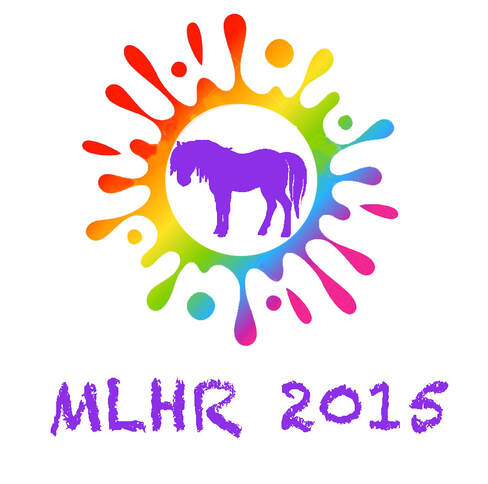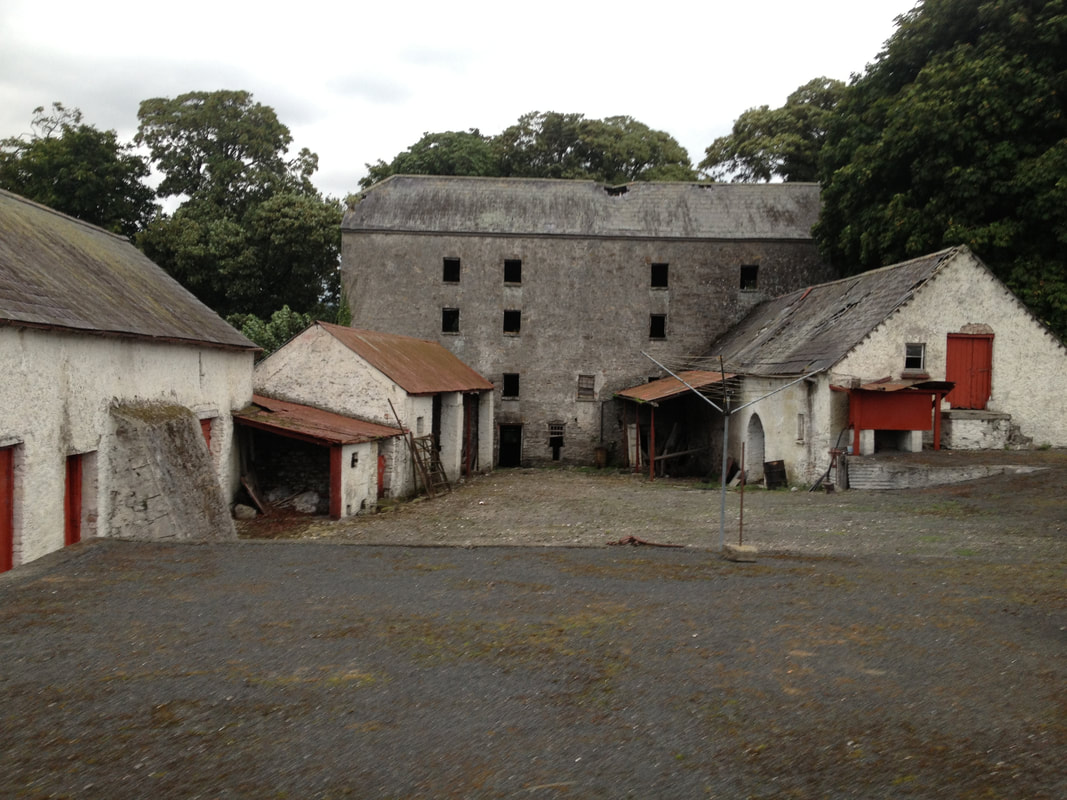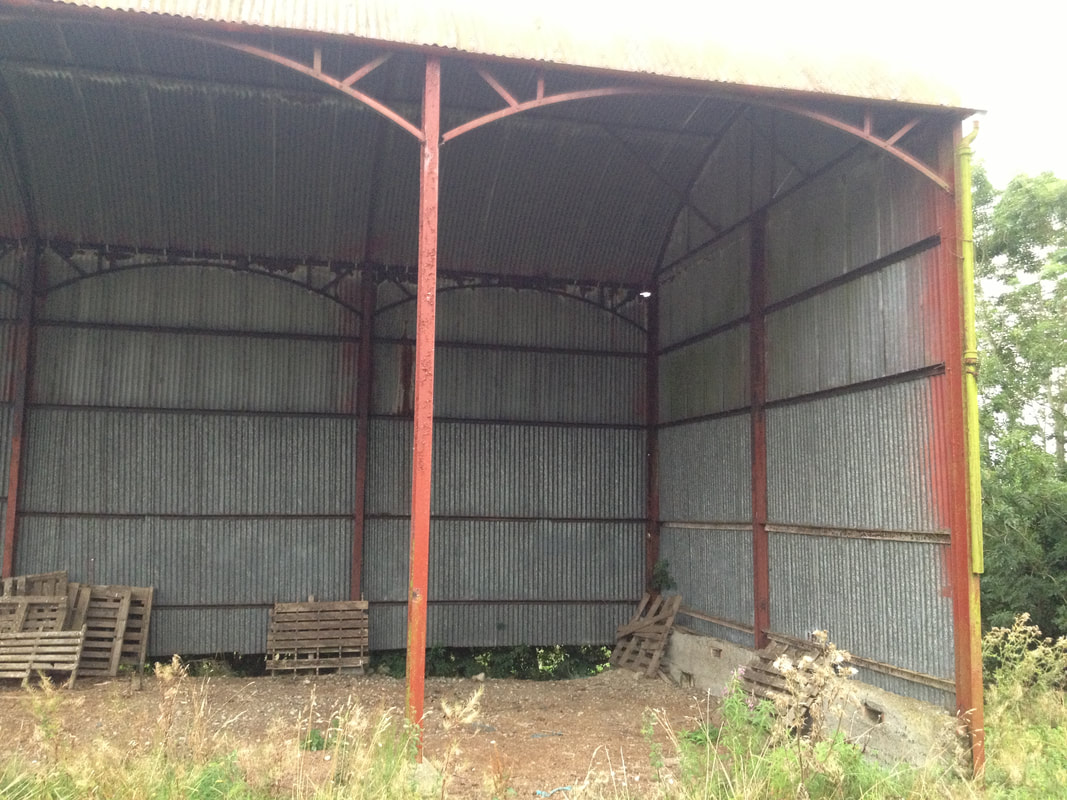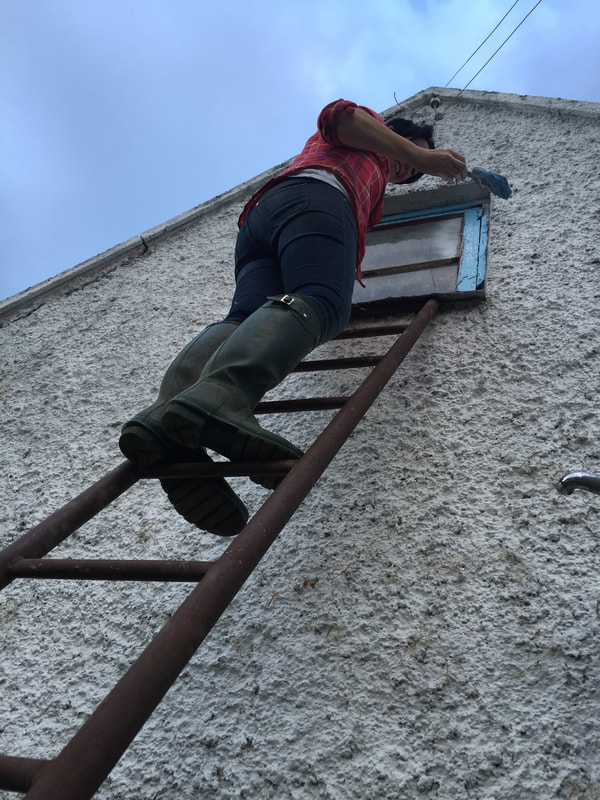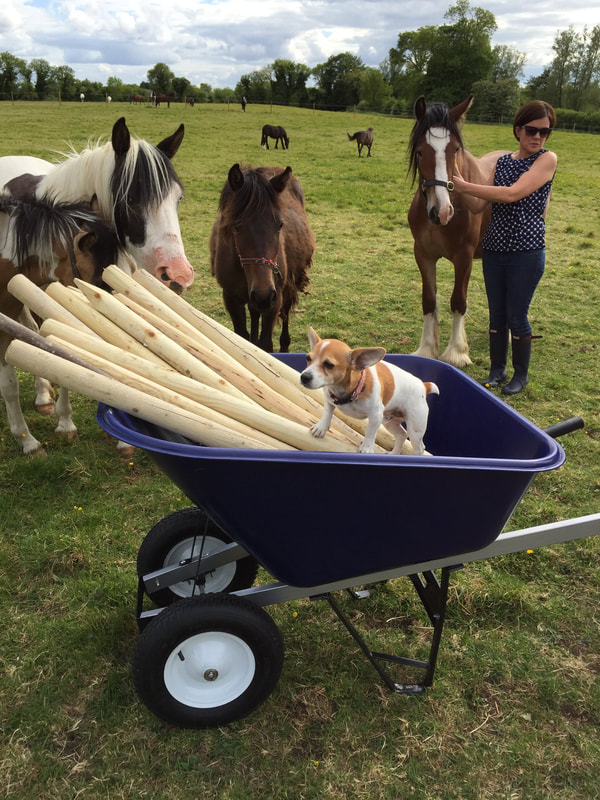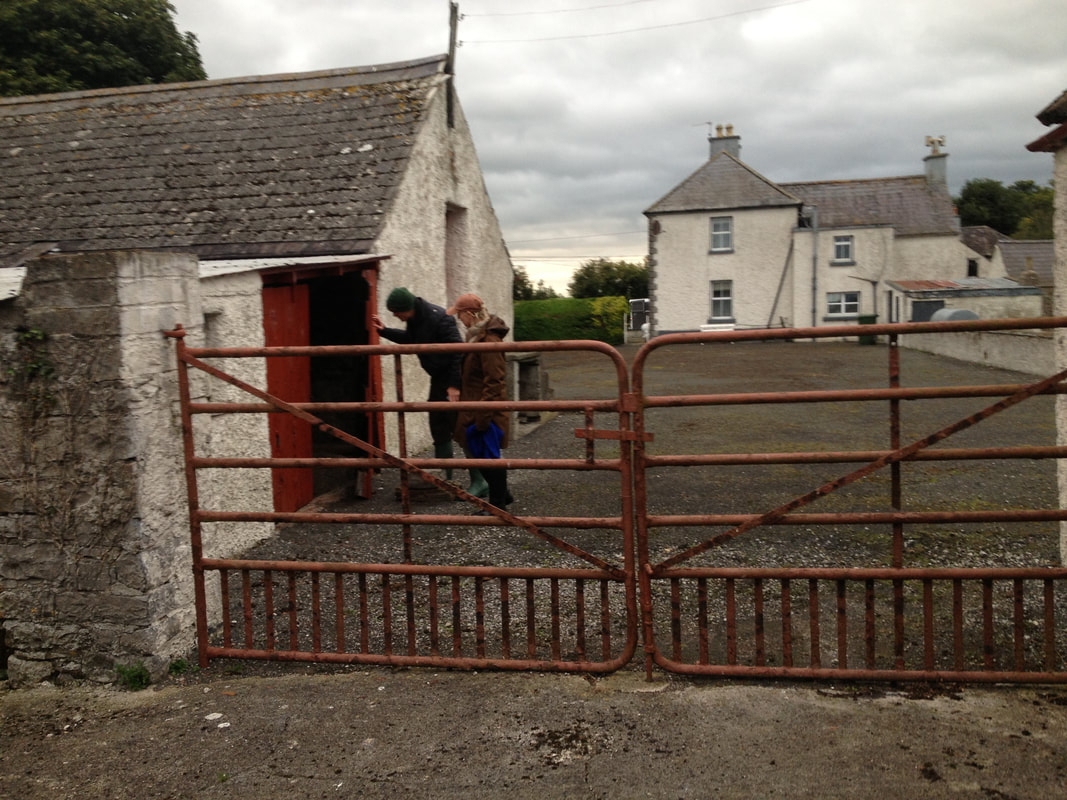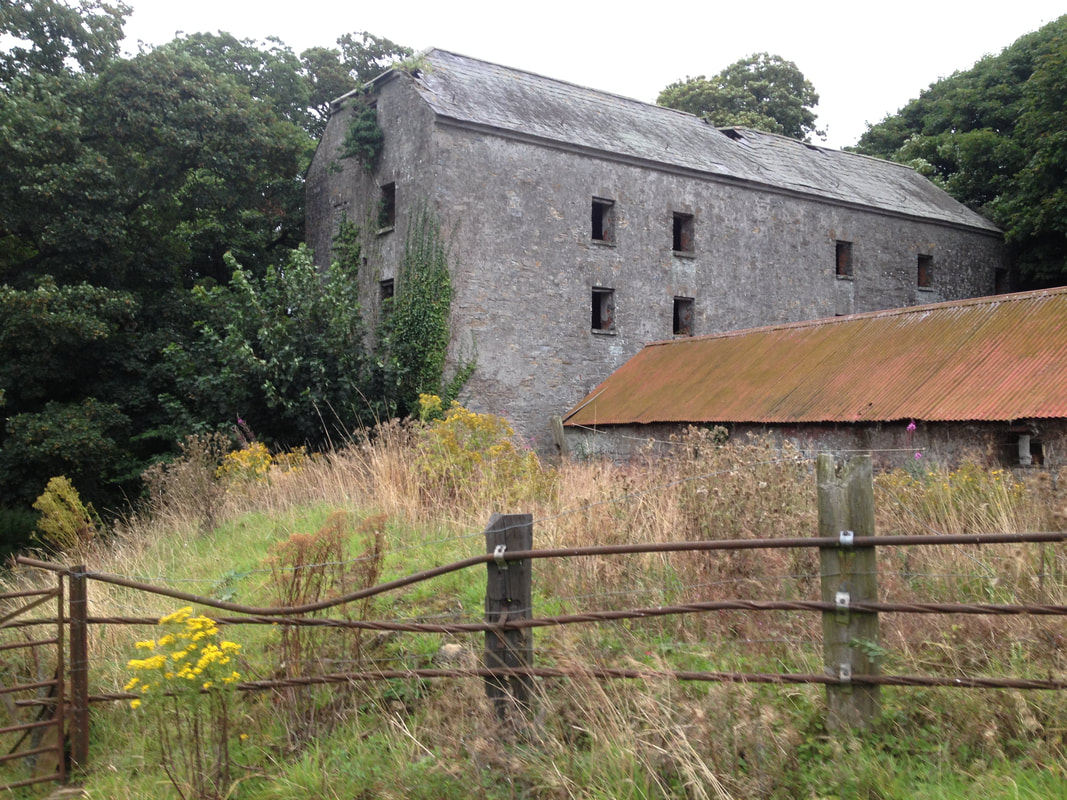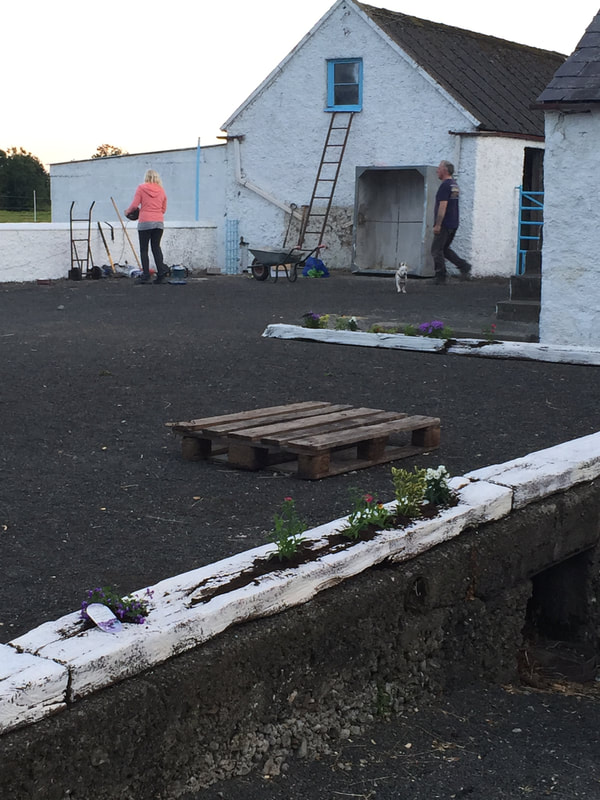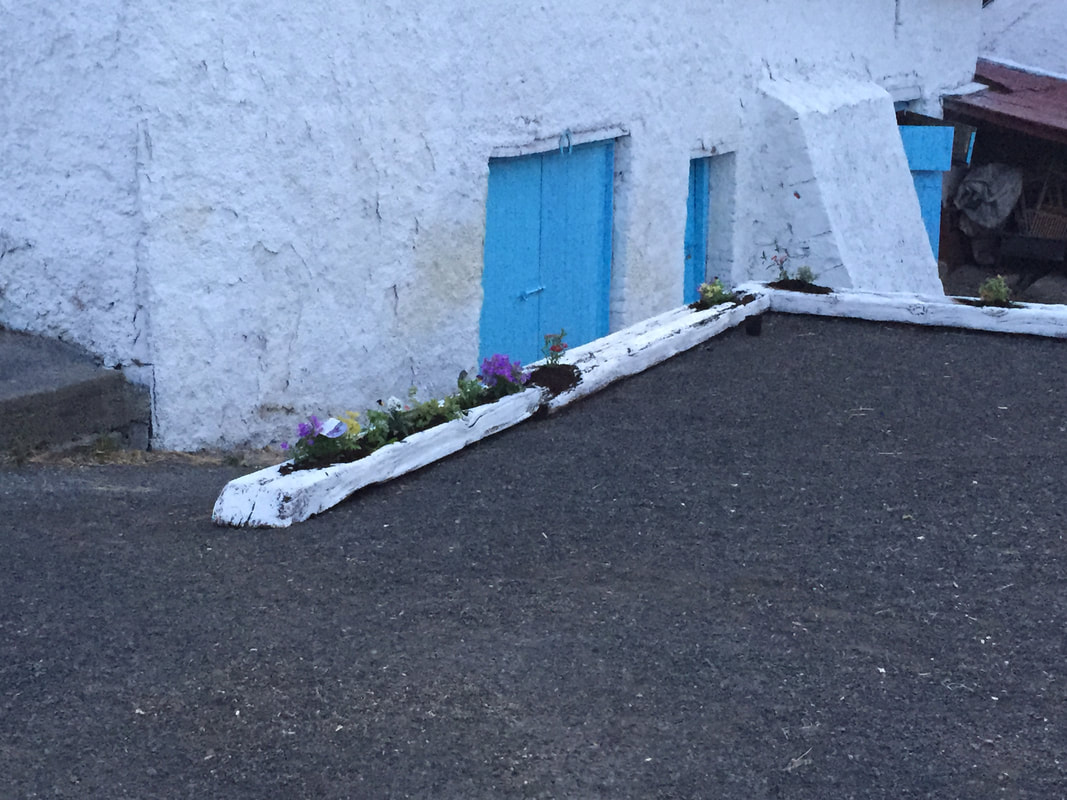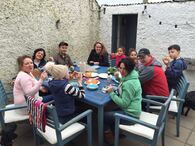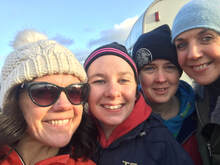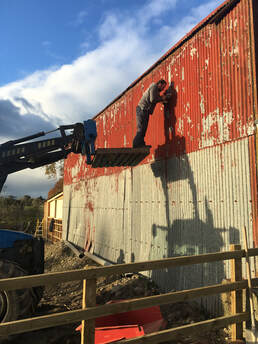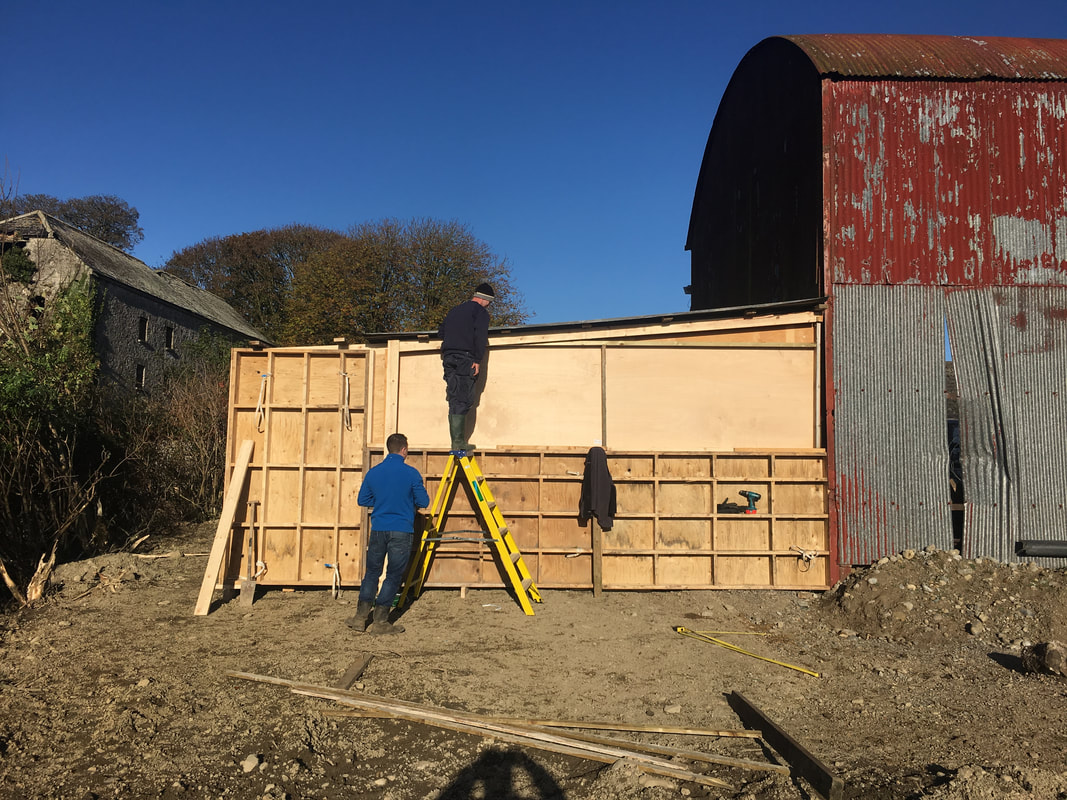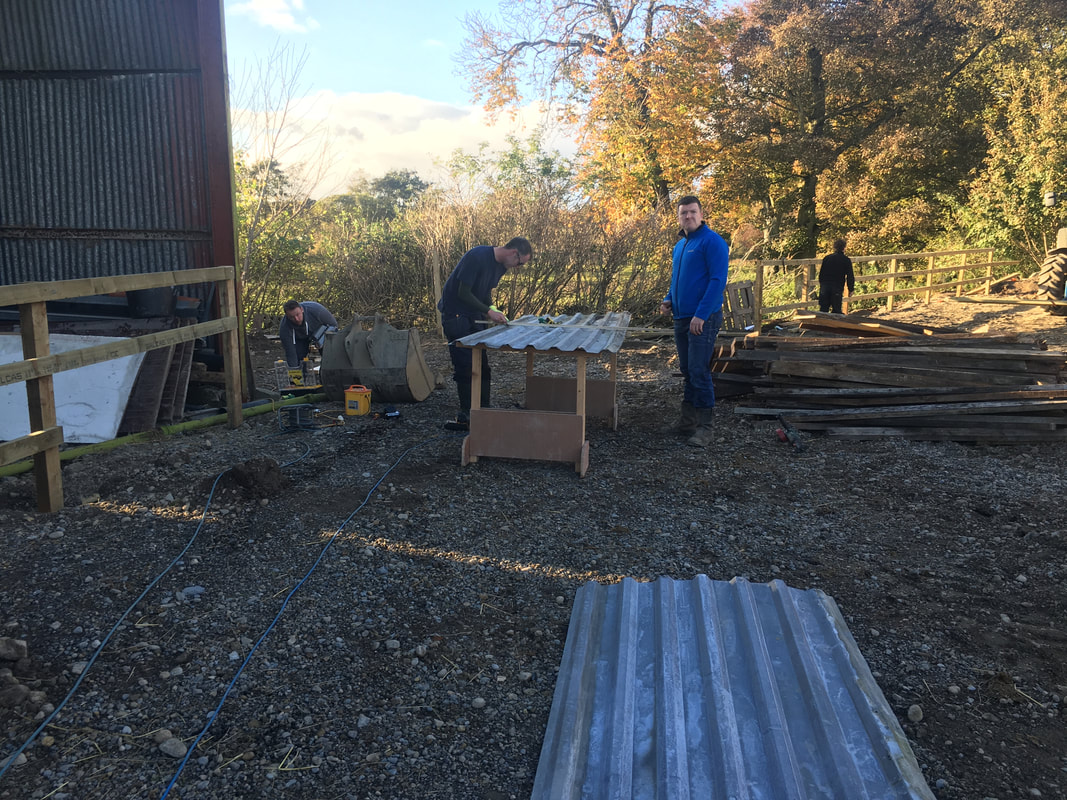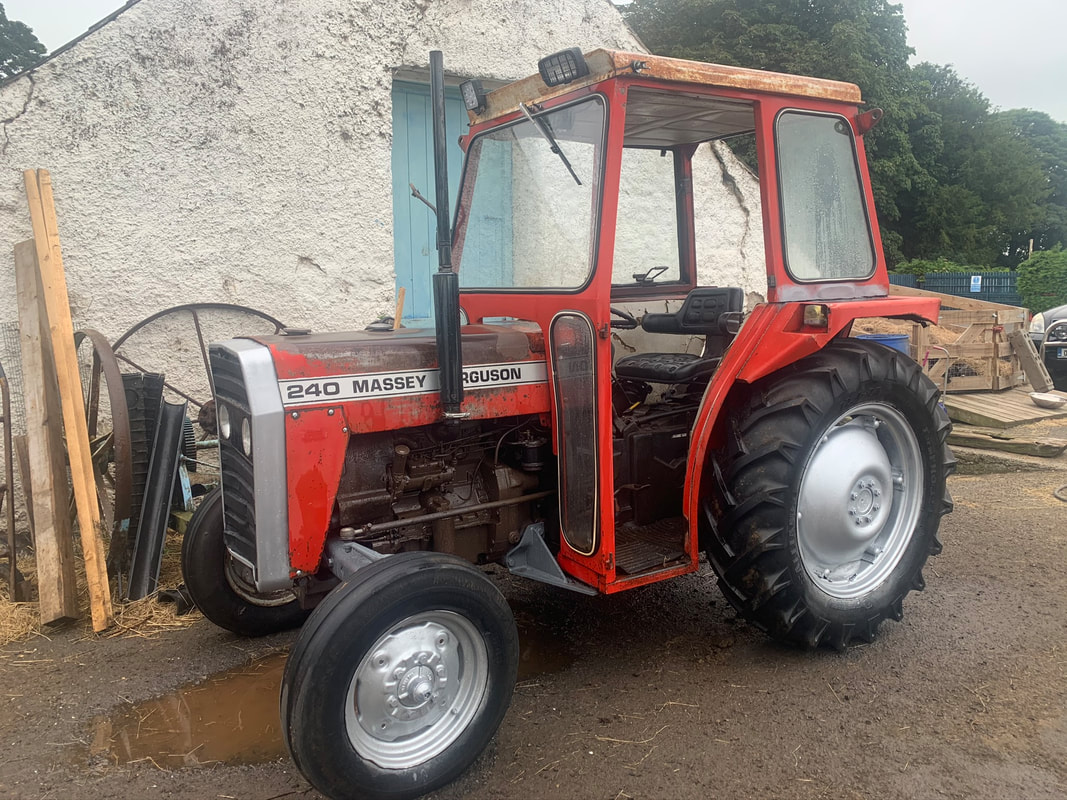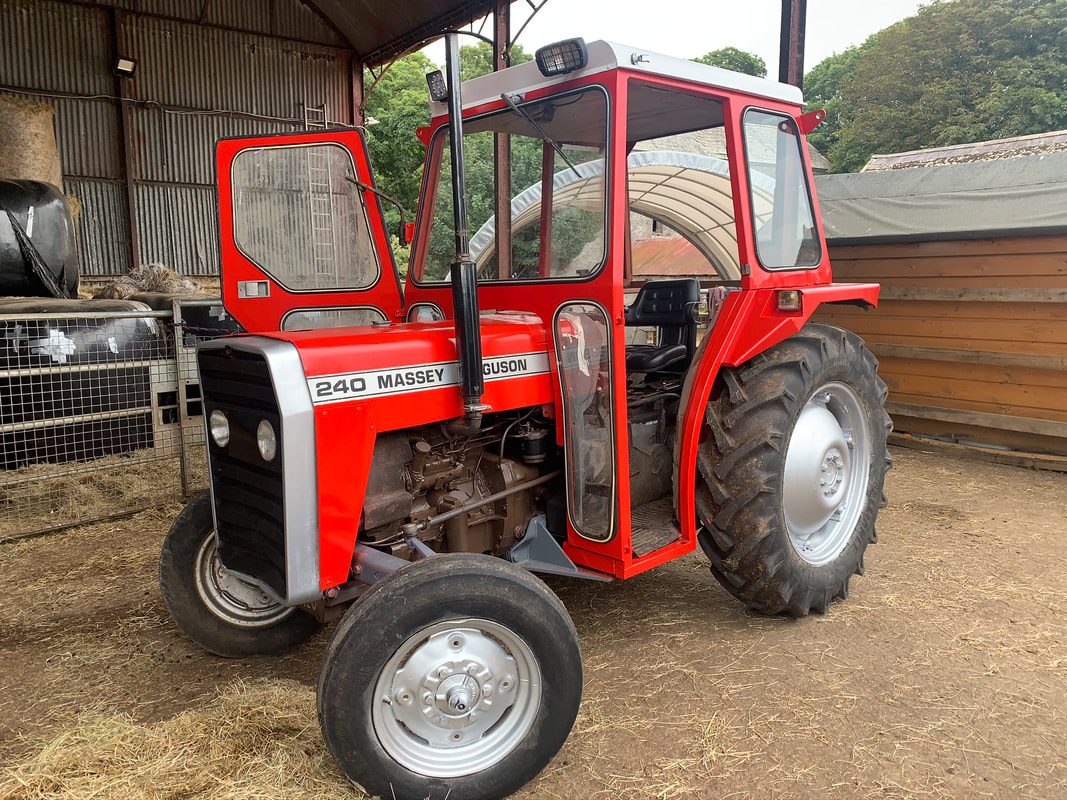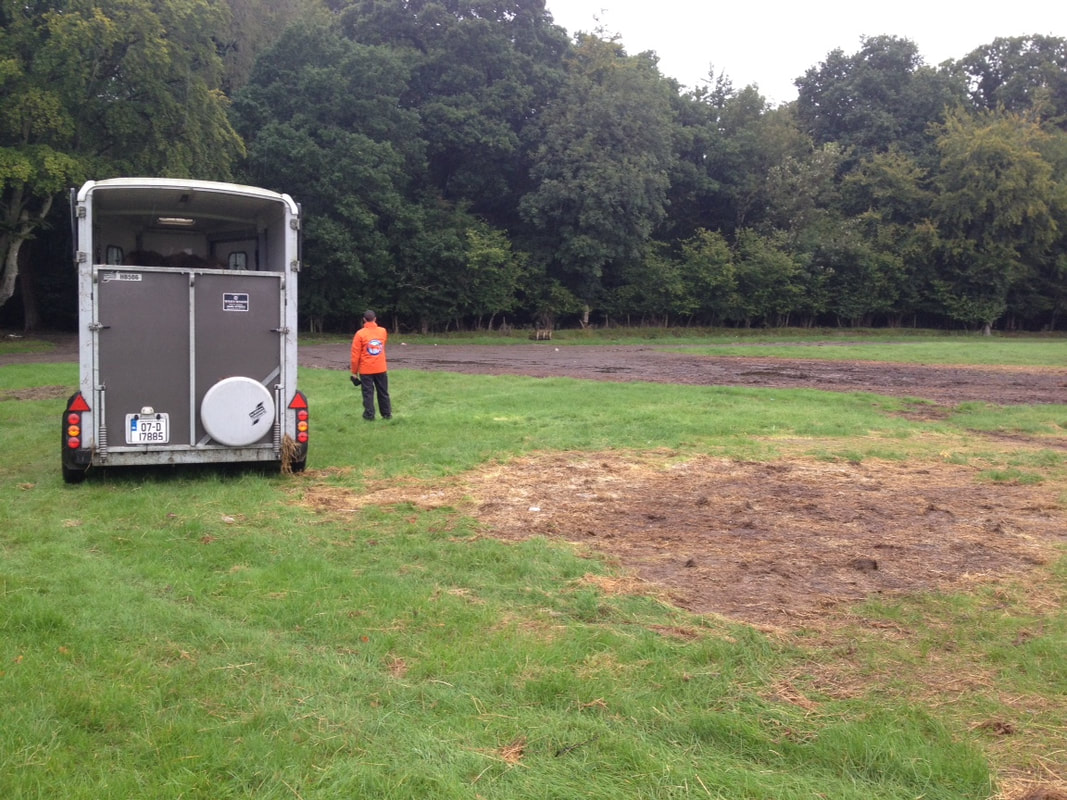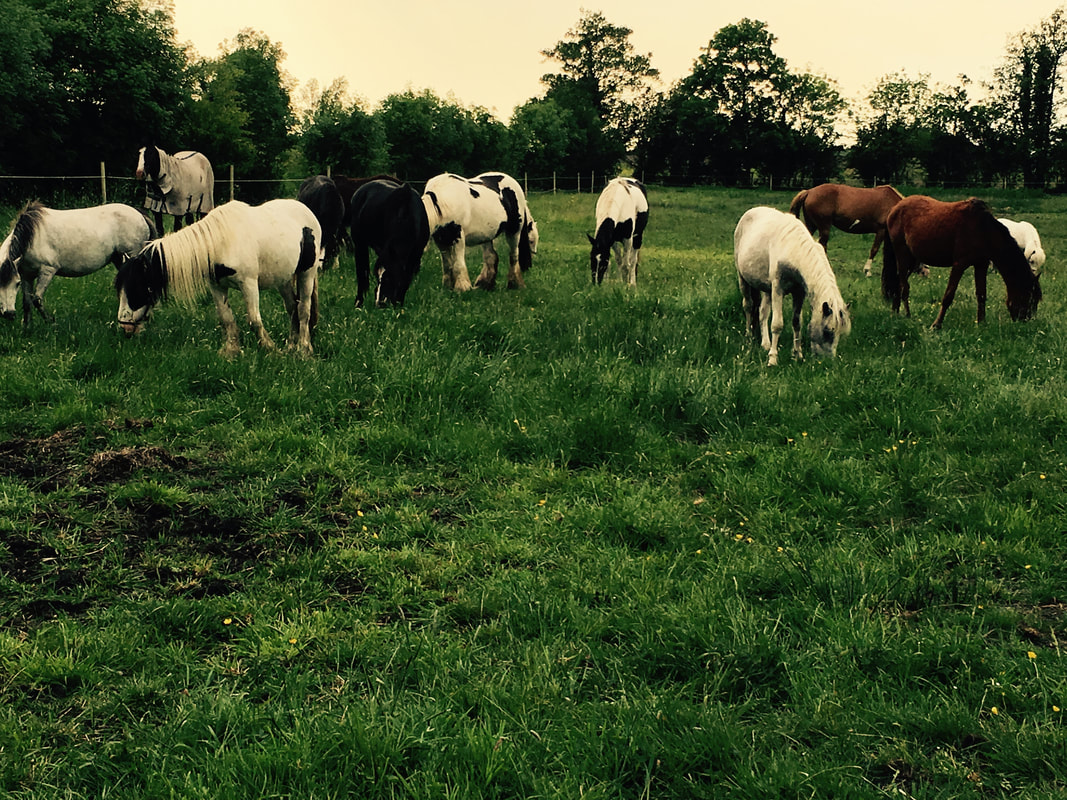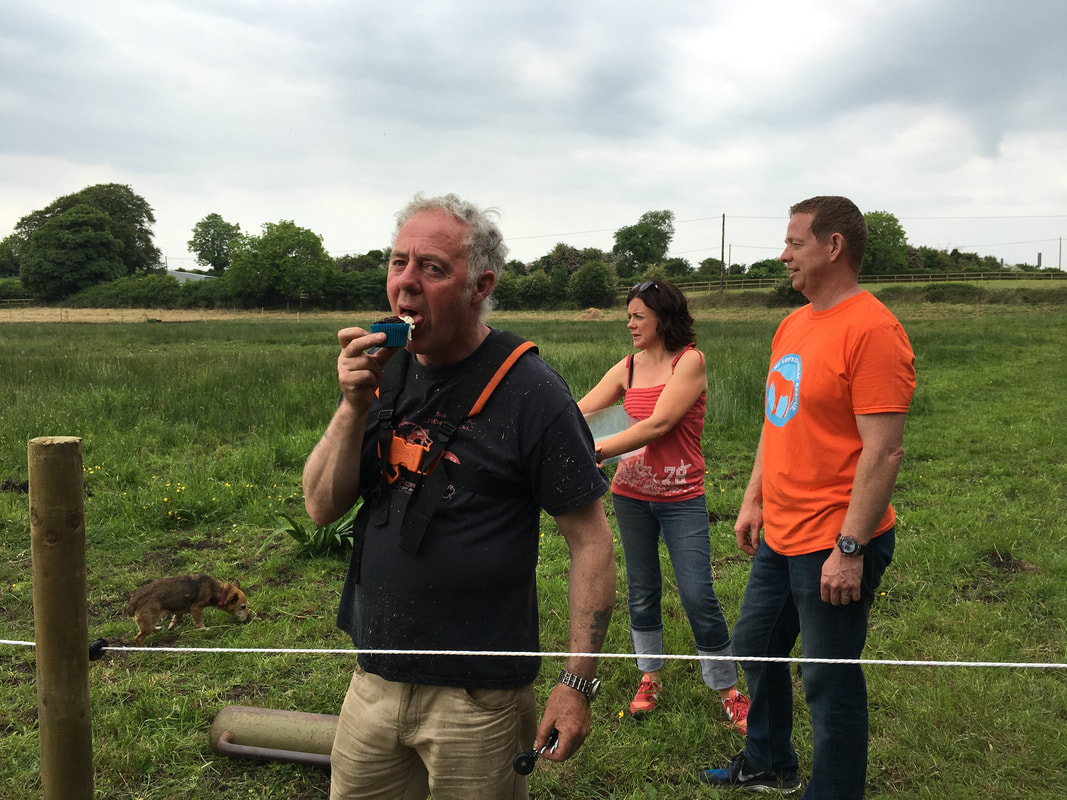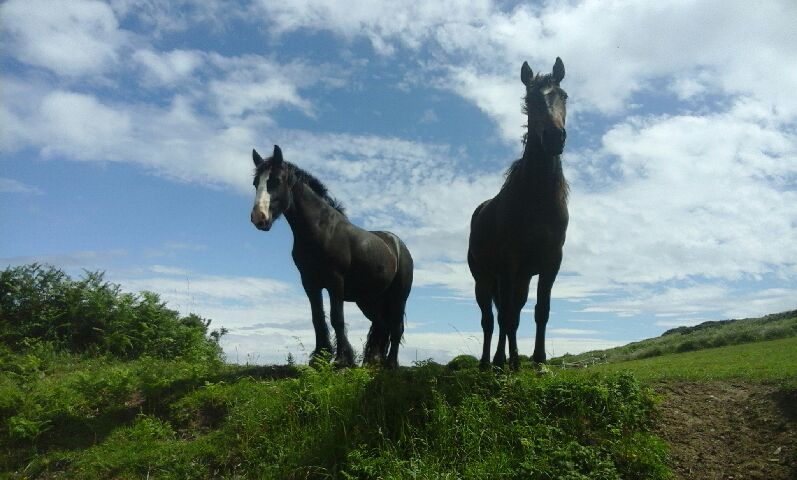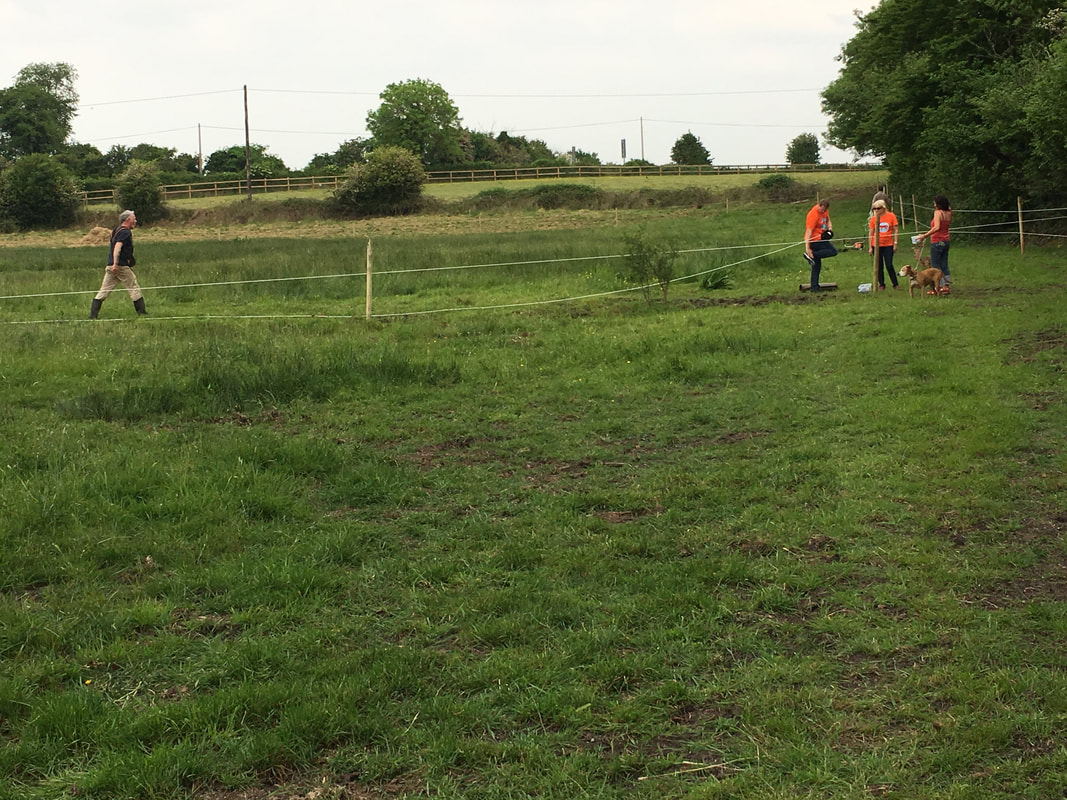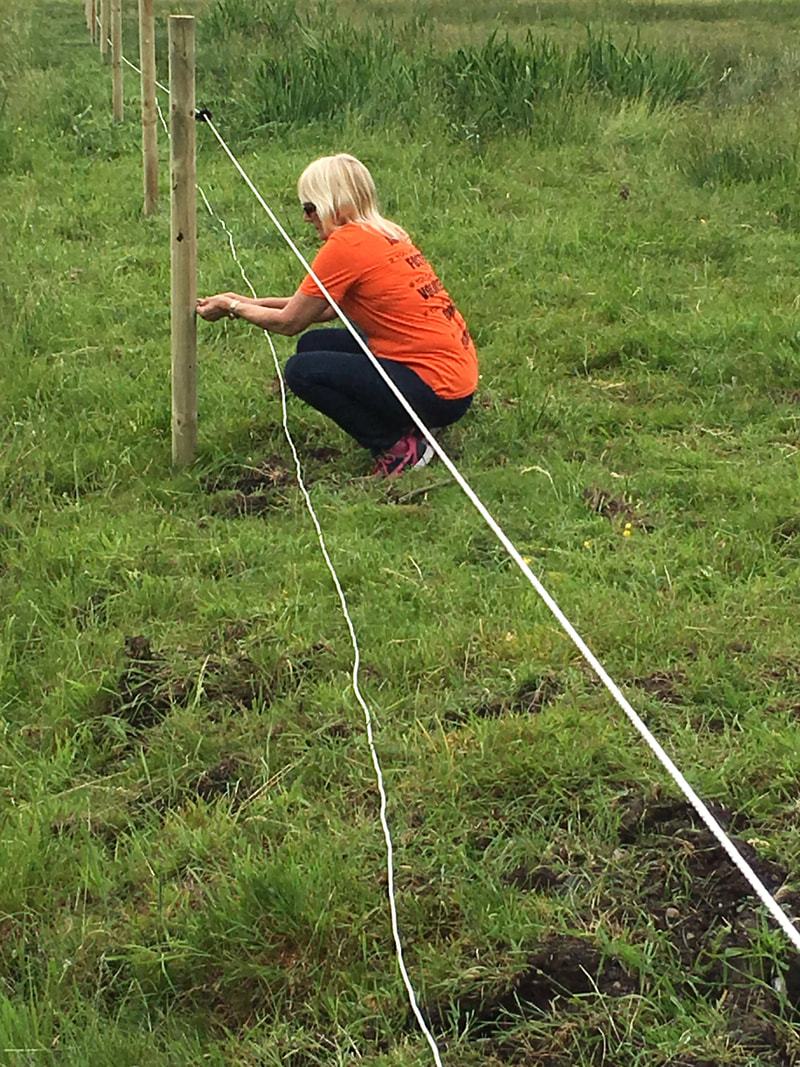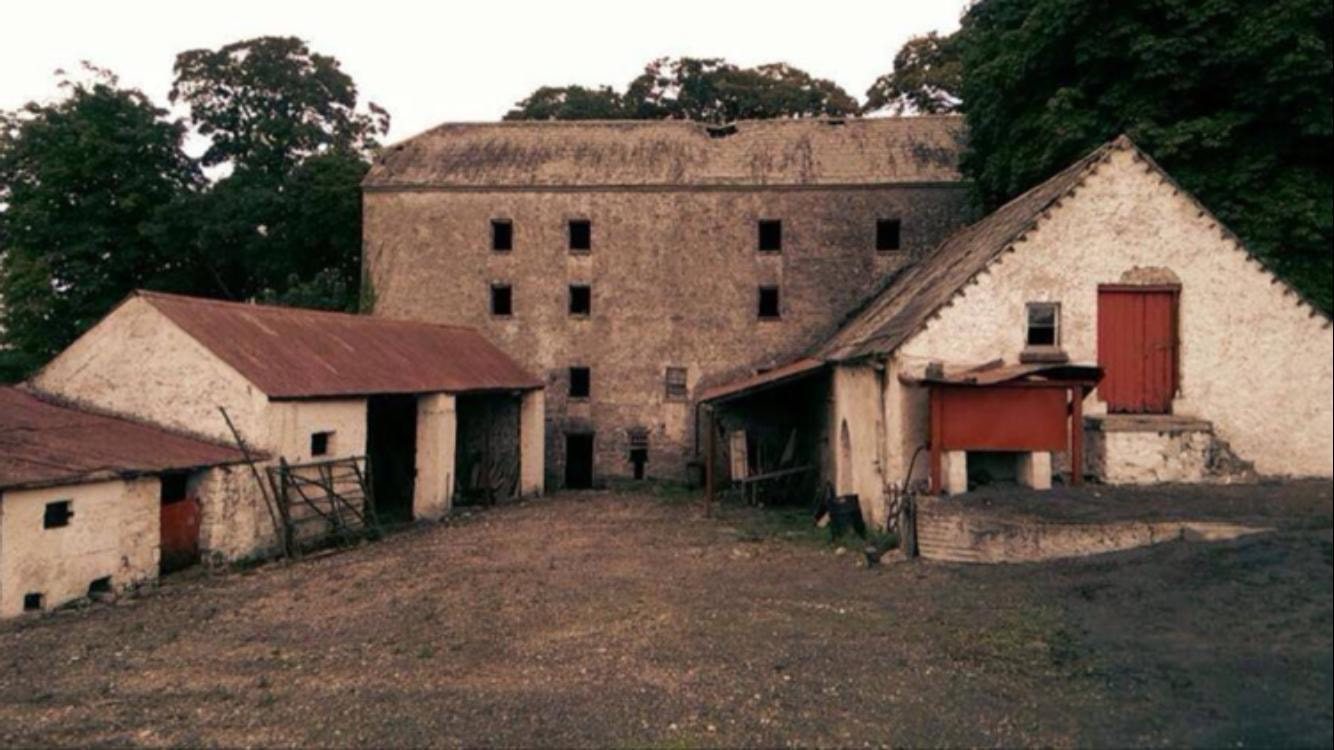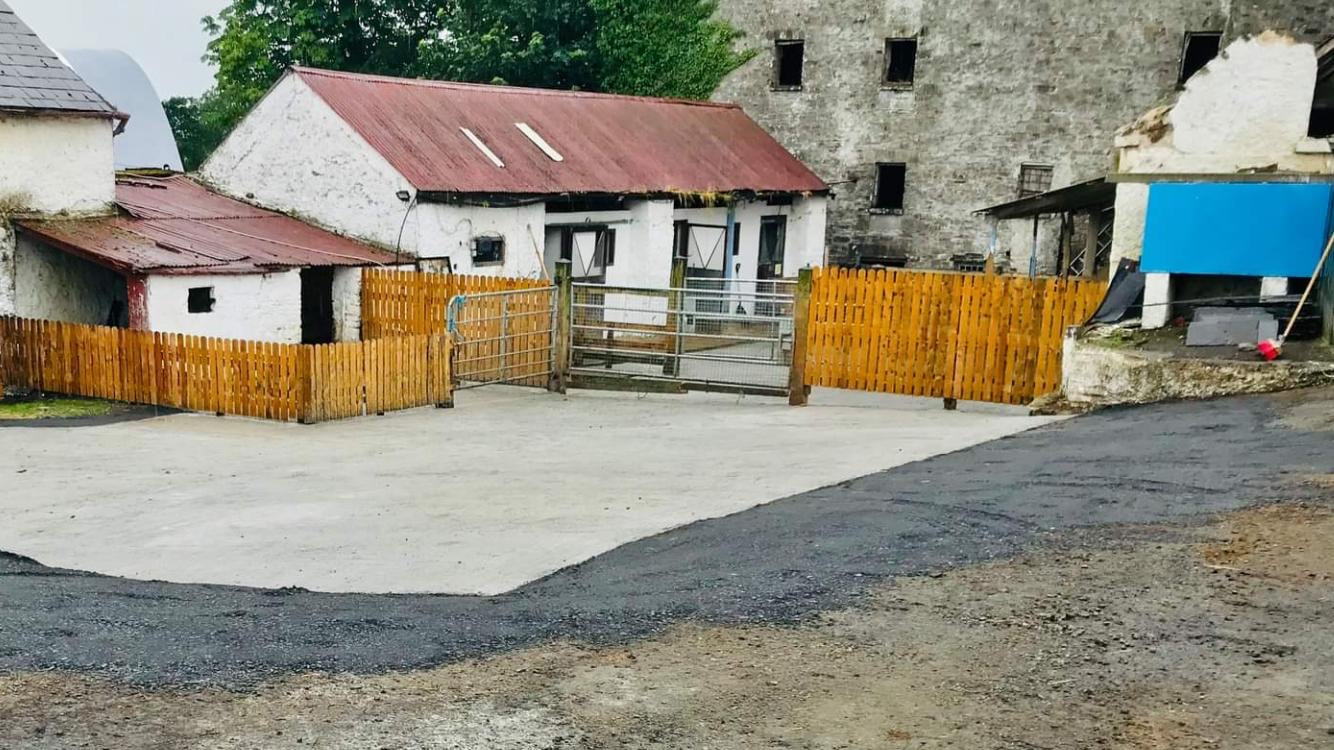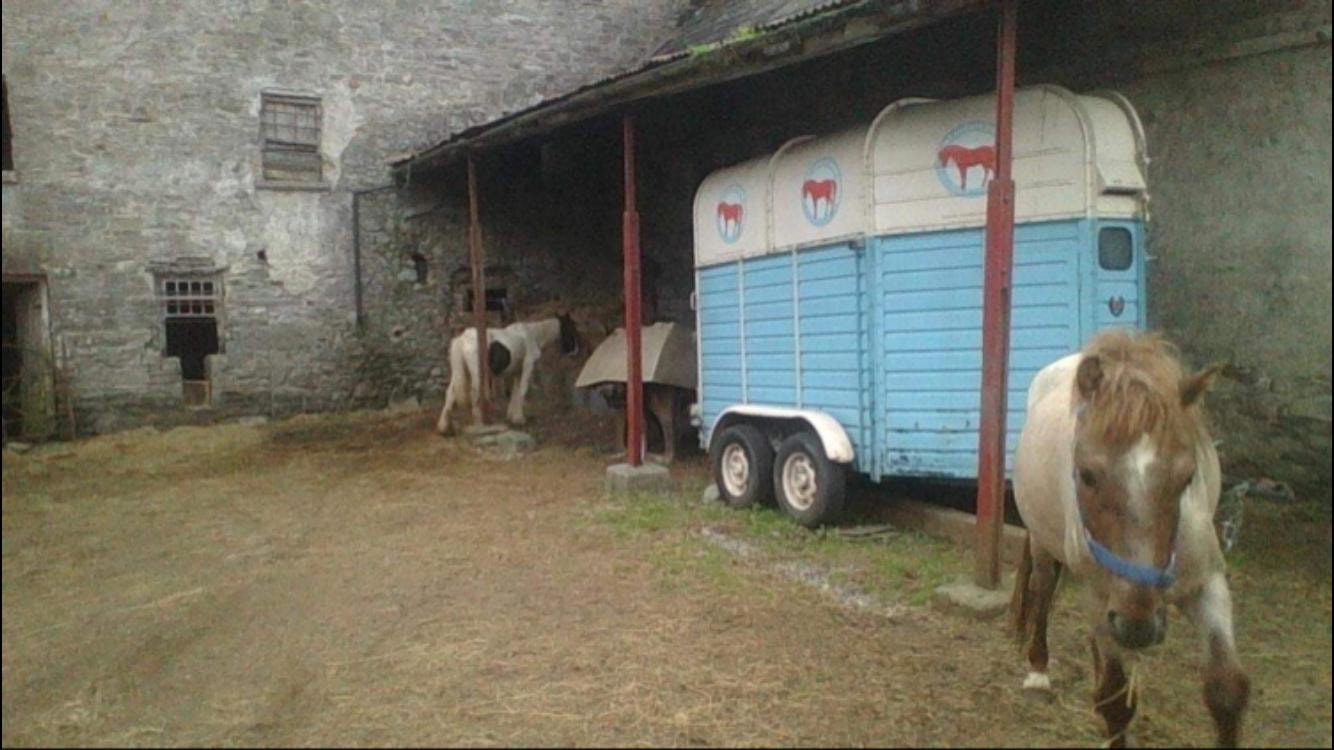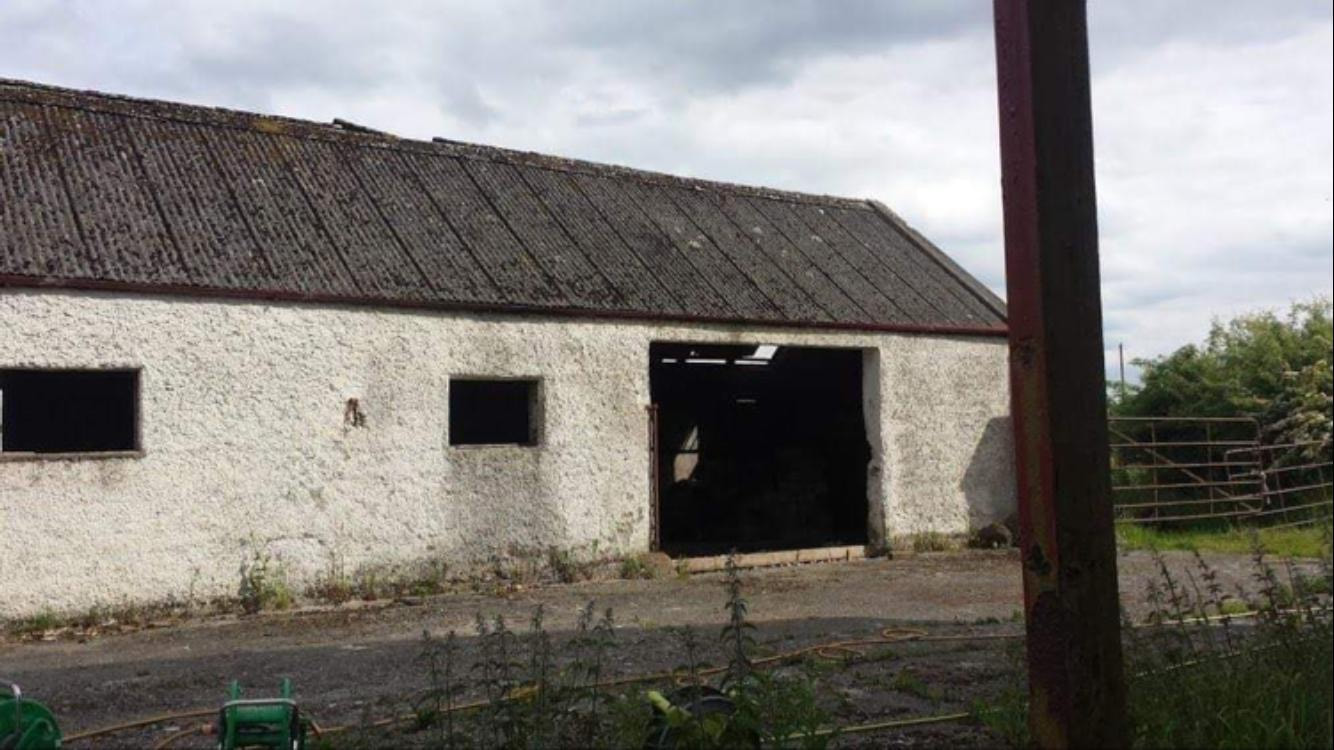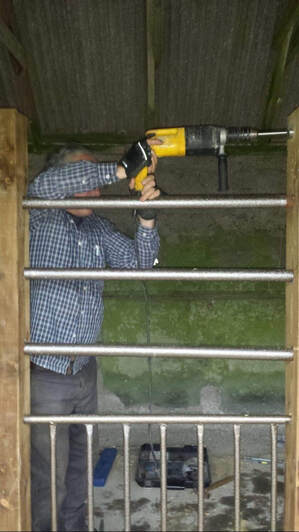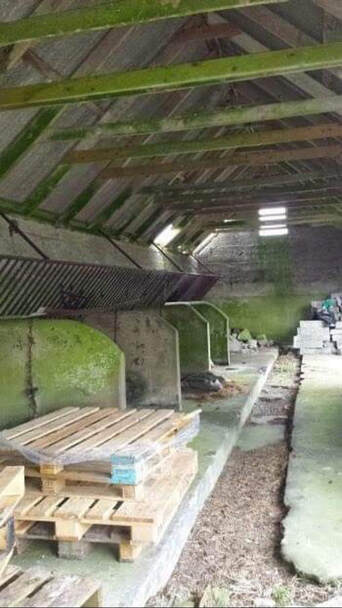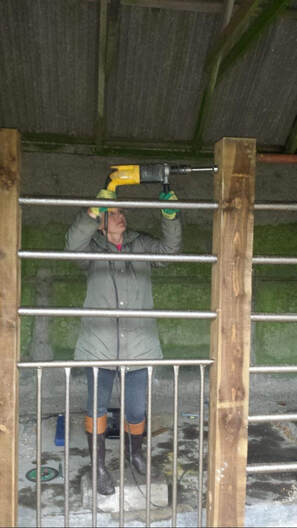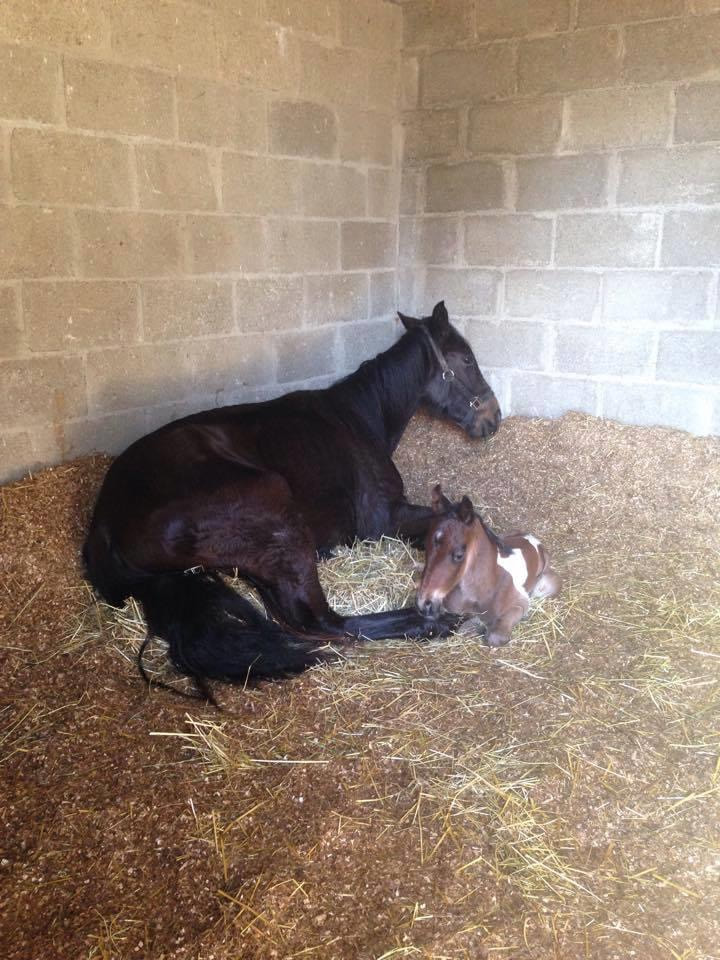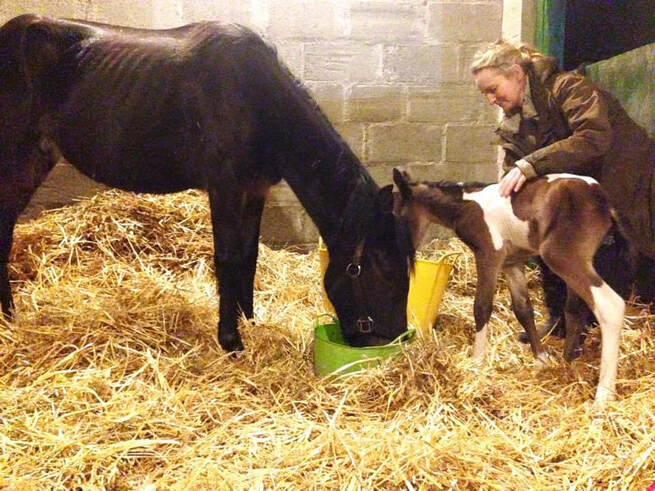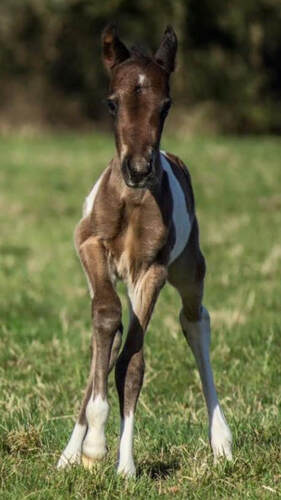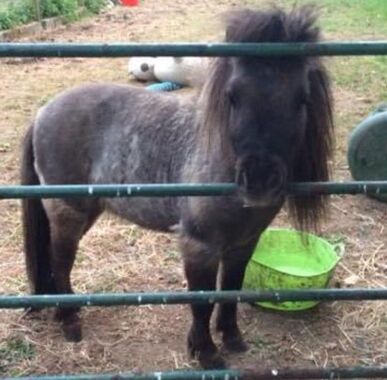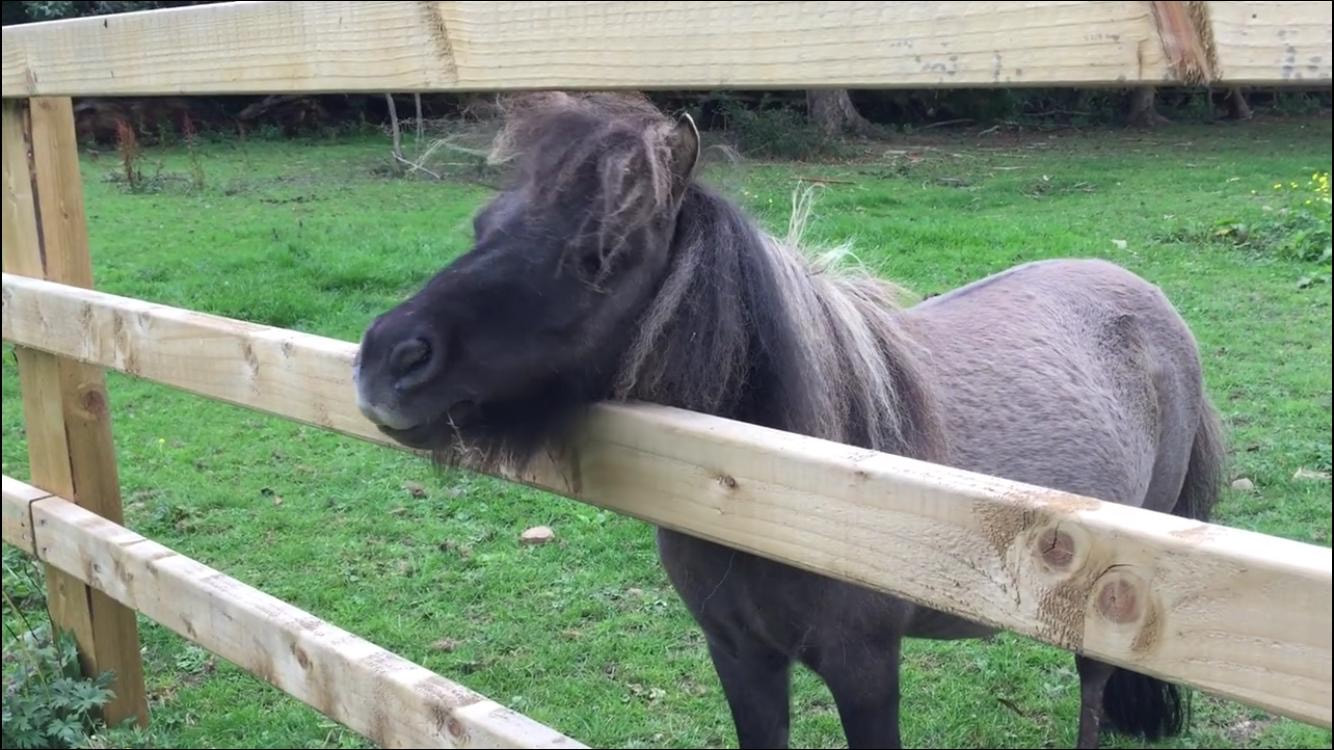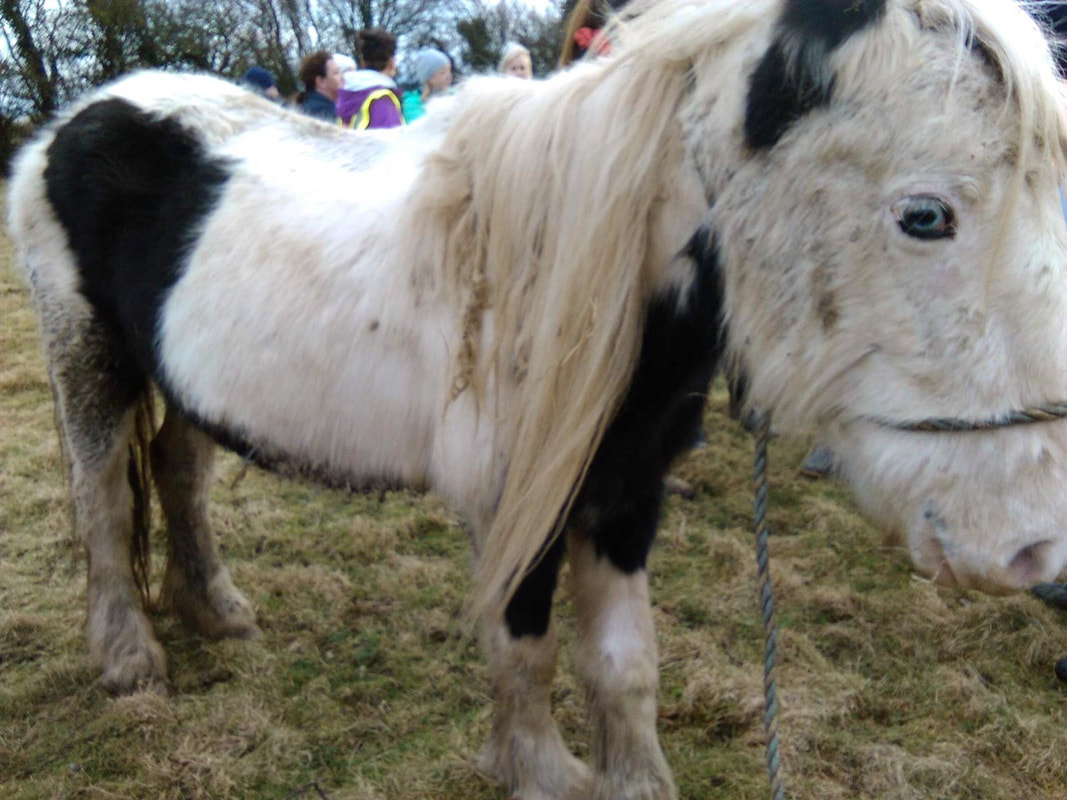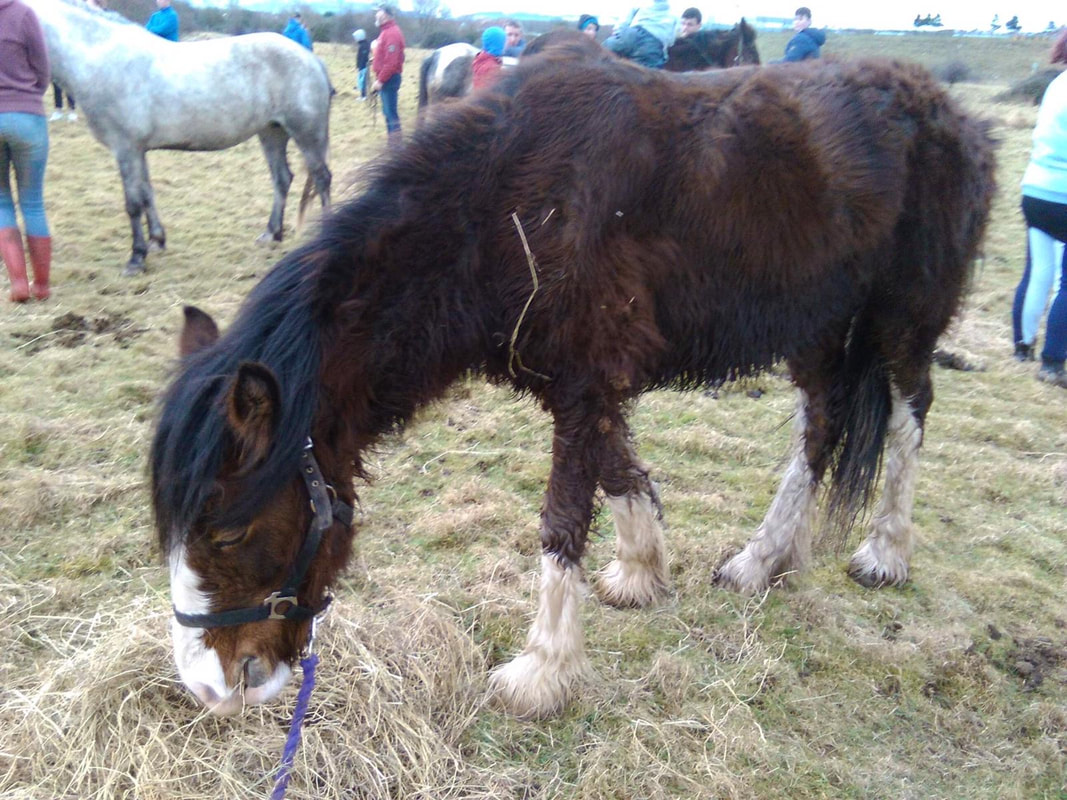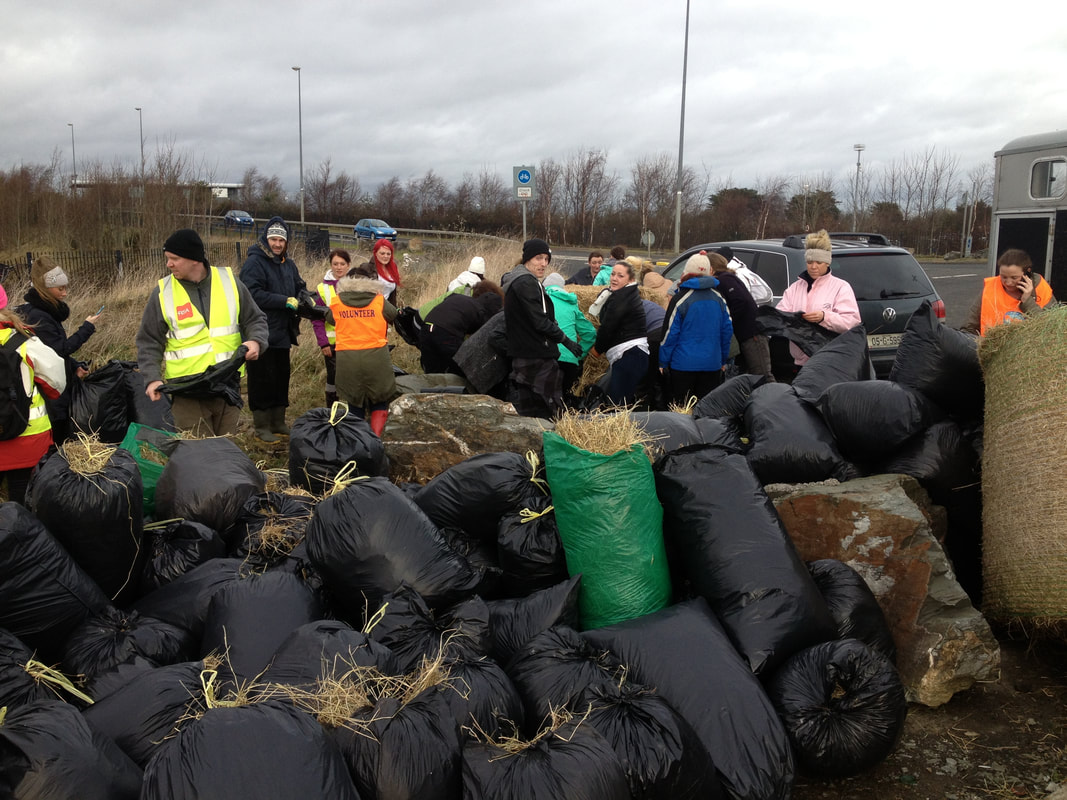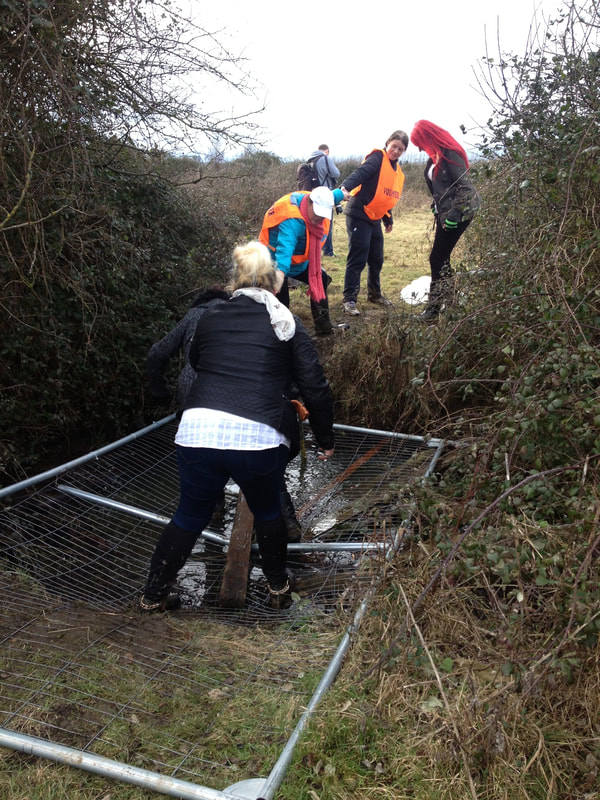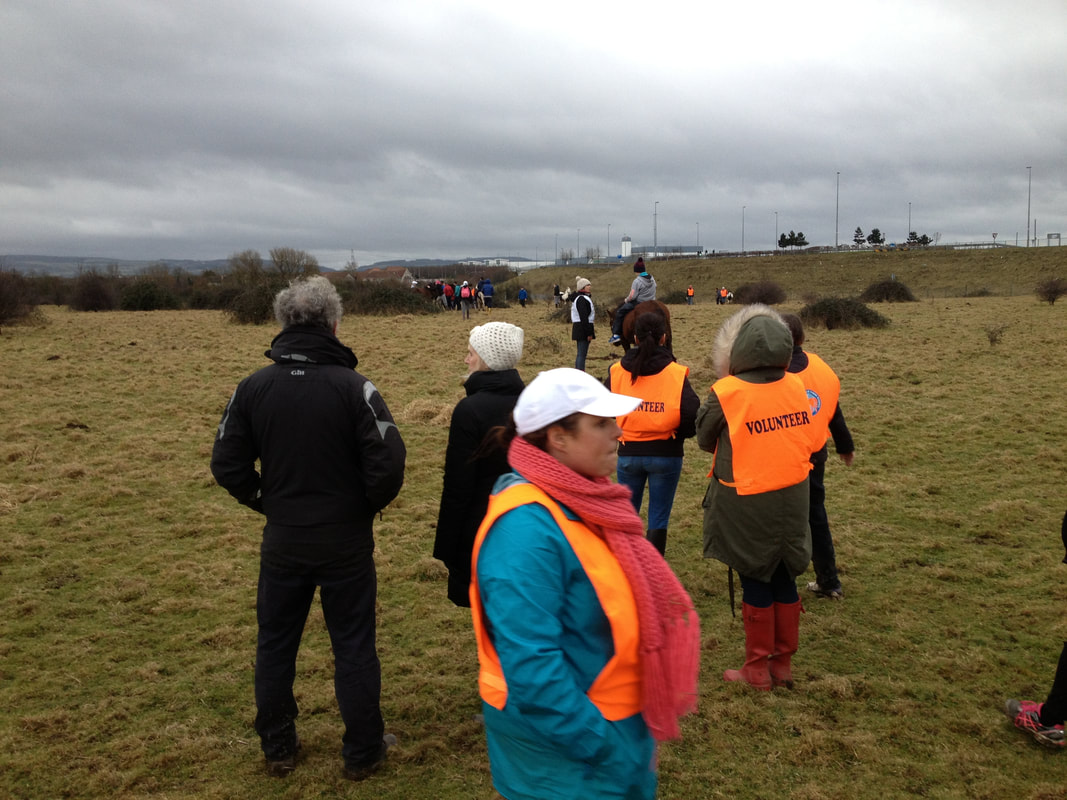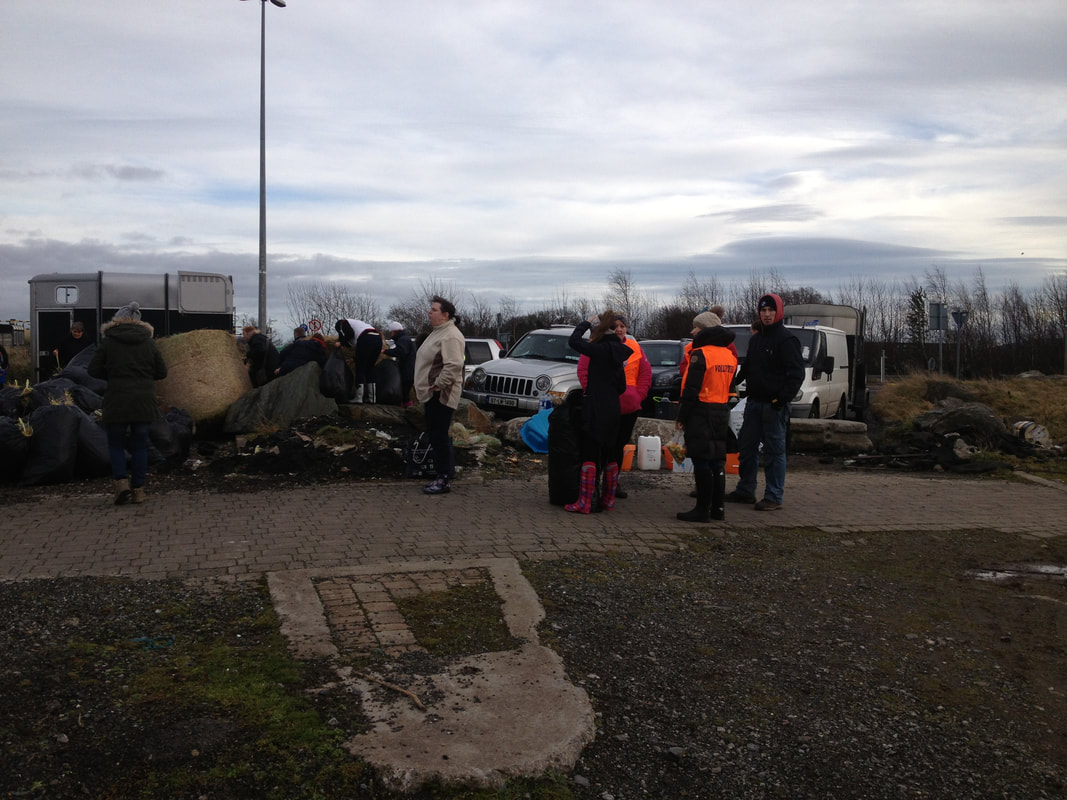2015
The girls go looking for the first MLHR base
As the number of horses grew and as our volunteer numbers grew it only made sense that a base was found. MLHR was now registered as a limited company and the search was on for land to rent.
The base had to be within driving distance of Dublin where the girls and most of the volunteers lived. It also had to have somewhere for people to be able to stay over and have running water and electricity. It also had to be cheap!
Strangely enough while looking for the land to set up their own rescue center the girls came across two cases of animal welfare themselves. ‘It was shocking really and just shows how much cruelty goes on out there under the radar. In the first place we went to view, this guy was breeding greyhounds in stables but in the most horrific conditions. In the second we found horses in a terrible state and the guy who was renting before us had been disposing of any dead horses by dragging them over to the muck heap and burying them. We found hooves and leg parts on the ground. And this we discovered while we were being shown around by the estate agent!’ Debs
Both cases were reported to the authorities and one of the volunteers ended up adopting a lovely terrier called Walter who was rescued from the second farm. The eventual base outside Enfield in Co Kildare was discovered through the grapevine. The couple who owned the land, Mona and Neil, found out about the girls and MLHR and offered to rent Mona’s old family farm to them. Mona loved the idea that the farm she had grown up on,
The girls go looking for the first MLHR base
As the number of horses grew and as our volunteer numbers grew it only made sense that a base was found. MLHR was now registered as a limited company and the search was on for land to rent.
The base had to be within driving distance of Dublin where the girls and most of the volunteers lived. It also had to have somewhere for people to be able to stay over and have running water and electricity. It also had to be cheap!
Strangely enough while looking for the land to set up their own rescue center the girls came across two cases of animal welfare themselves. ‘It was shocking really and just shows how much cruelty goes on out there under the radar. In the first place we went to view, this guy was breeding greyhounds in stables but in the most horrific conditions. In the second we found horses in a terrible state and the guy who was renting before us had been disposing of any dead horses by dragging them over to the muck heap and burying them. We found hooves and leg parts on the ground. And this we discovered while we were being shown around by the estate agent!’ Debs
Both cases were reported to the authorities and one of the volunteers ended up adopting a lovely terrier called Walter who was rescued from the second farm. The eventual base outside Enfield in Co Kildare was discovered through the grapevine. The couple who owned the land, Mona and Neil, found out about the girls and MLHR and offered to rent Mona’s old family farm to them. Mona loved the idea that the farm she had grown up on,
that her Dad had loved so much, would now be a home and haven for neglected and abused animals.
‘We knew straight away it was for us, we just got a really good feeling when we visited. It was about 40 acres with an old house and lots of out houses and sheds as Mona’s father had had a small herd of cows. And amazingly it wasn’t too far from Cathy’s farm which worked out perfectly’ Martina
The house hadn’t been lived in for some years and needed a lot of work done to it, rewiring, central heating put in, flooring and roofing. Mona and Neil sorted the house and the volunteers sorted the farm. Until the house was ready they stayed in a caravan in the yard.
The water situation!
‘When we weren’t hauling buckets of water up from the river for all of our animals’ needs (it would be a whole year before we got our present system that pumps water from the river through underground pipes to our water tank in the yard), we were building stables out of the old cowsheds amidst the constant daily feeding and caring for our animals.’ Martina
‘We knew straight away it was for us, we just got a really good feeling when we visited. It was about 40 acres with an old house and lots of out houses and sheds as Mona’s father had had a small herd of cows. And amazingly it wasn’t too far from Cathy’s farm which worked out perfectly’ Martina
The house hadn’t been lived in for some years and needed a lot of work done to it, rewiring, central heating put in, flooring and roofing. Mona and Neil sorted the house and the volunteers sorted the farm. Until the house was ready they stayed in a caravan in the yard.
The water situation!
‘When we weren’t hauling buckets of water up from the river for all of our animals’ needs (it would be a whole year before we got our present system that pumps water from the river through underground pipes to our water tank in the yard), we were building stables out of the old cowsheds amidst the constant daily feeding and caring for our animals.’ Martina
Peter the tractor
Peter came with the farm and is still serving it well. It’s Peter who allows the huge round bales of hay to be brought over the fields every day for the horses. It's Peter who drags the muck scraper round the yard and it's Peter who pulls trailers full of rubbish or equipment.
‘It was Peter too who pulled the trailer with our big water container around the fields so we could fill up all the drinkers until we finally got the water piped directly from the river. It was hard work in those days but it was worth every drop of sweat.’ Debs
The volunteers have developed a great respect for this hardy old tractor and it's called Peter after Mona’s dad who worked so hard all his life on the farm. ‘Every now and then Peter decides to give us a scare by refusing to start but usually with some gentle persuasion and jump leads we’re back in action.’ Debs
Peter came with the farm and is still serving it well. It’s Peter who allows the huge round bales of hay to be brought over the fields every day for the horses. It's Peter who drags the muck scraper round the yard and it's Peter who pulls trailers full of rubbish or equipment.
‘It was Peter too who pulled the trailer with our big water container around the fields so we could fill up all the drinkers until we finally got the water piped directly from the river. It was hard work in those days but it was worth every drop of sweat.’ Debs
The volunteers have developed a great respect for this hardy old tractor and it's called Peter after Mona’s dad who worked so hard all his life on the farm. ‘Every now and then Peter decides to give us a scare by refusing to start but usually with some gentle persuasion and jump leads we’re back in action.’ Debs
‘The day our first seven rescues arrived was a somewhat surreal experience. I mean here we were, in our own place, our own rescue farm. And here were our beautiful horses, who’d been through so much and were now safe and well and about to start this new adventure with us. It was an amazing moment’ Martina
The arrival of the next 14 horses was an equally wonderful but also slightly terrifying experience. A large horse truck had been organised to transport them but when it arrived with the horses it couldn’t fit through the farm gate. So the horses, some of whom were not the tamest, had to be unloaded on the busy road outside the gate. The girls stopped the traffic on either side, the truck parked as close to the gate as possible and the horses started coming out. ‘Our hearts were in our mouth from beginning to end. All you needed was one horse to get spooked and it could have been chaos. In the end they all walked safely onto the farm but let's say that’s something we won’t ever repeat!’ Debs
The arrival of the next 14 horses was an equally wonderful but also slightly terrifying experience. A large horse truck had been organised to transport them but when it arrived with the horses it couldn’t fit through the farm gate. So the horses, some of whom were not the tamest, had to be unloaded on the busy road outside the gate. The girls stopped the traffic on either side, the truck parked as close to the gate as possible and the horses started coming out. ‘Our hearts were in our mouth from beginning to end. All you needed was one horse to get spooked and it could have been chaos. In the end they all walked safely onto the farm but let's say that’s something we won’t ever repeat!’ Debs
MLHR now had its base and the farm was beginning to take shape. Those first years were amazingly hard work and the volunteers who stuck it out and are still with the charity have really shown their dedication.
For the first year volunteers had to carry all the water for the horses up from the river. There was no dry standing, just mud everywhere that boots and wheelbarrows got stuck in. The horses had to be watched carefully in case they got mud rash.
That winter three of our most wonderful volunteers, Lisa, Mick and June smashed down walls and built stables from the old cow stalls. They were helped by two builders who were kindly ‘donated’ to the cause by Melvin Benn of Festival Republic along with a generous donation for supplies.
It was trojan work but it has stood the test of time and those stables and all the massive work that everyone put in has allowed hundreds of horses to find a safe home.
Those hardy volunteers who were there at the start get a great laugh out of any of the newer ones who think that the MLHR farm can be hard work now. They just look at each other and smile knowingly.
Our first horsebox was great but as we expanded we needed a bigger stronger model. Mick came to the rescue and bought us the box that we still use today. Our original horsebox is now the MLHR drinks bar for EP and works equally well in this capacity!
For the first year volunteers had to carry all the water for the horses up from the river. There was no dry standing, just mud everywhere that boots and wheelbarrows got stuck in. The horses had to be watched carefully in case they got mud rash.
That winter three of our most wonderful volunteers, Lisa, Mick and June smashed down walls and built stables from the old cow stalls. They were helped by two builders who were kindly ‘donated’ to the cause by Melvin Benn of Festival Republic along with a generous donation for supplies.
It was trojan work but it has stood the test of time and those stables and all the massive work that everyone put in has allowed hundreds of horses to find a safe home.
Those hardy volunteers who were there at the start get a great laugh out of any of the newer ones who think that the MLHR farm can be hard work now. They just look at each other and smile knowingly.
Our first horsebox was great but as we expanded we needed a bigger stronger model. Mick came to the rescue and bought us the box that we still use today. Our original horsebox is now the MLHR drinks bar for EP and works equally well in this capacity!
This EP we held a very special mass in honour of the twentieth anniversary of the very first Father Ted episode. Our patron Neil Hannon led the singing, Pauline McGlynn aka Mrs Doyle very kindly agreed to be the compere and Father Damo (Joe Rooney) and Father McLove (Patrick McDonnell) said mass.
It was an amazing success and so in keeping with the hilarity of the show and the creativity of
the founders of the rescue.
In one of the TV episodes, Father Ted agrees to compere The Lovely Girl competition. The lovely girl who won, Imelda, was played by actress Dawn Bradfield who was secretly planted in the audience for the Mass. Everyone was sitting on bales of hay singing along and no-one recognised ‘Imelda’ until a volunteer was requested from the crowd to help with the show.
‘Imelda’ volunteered and when she took to the stage the place erupted as people realised who she was. ‘We’re planning something big for the thirtieth anniversary and we just love the connection between MLHR and Father Ted. It's very special to us.’ Cathy
It was an amazing success and so in keeping with the hilarity of the show and the creativity of
the founders of the rescue.
In one of the TV episodes, Father Ted agrees to compere The Lovely Girl competition. The lovely girl who won, Imelda, was played by actress Dawn Bradfield who was secretly planted in the audience for the Mass. Everyone was sitting on bales of hay singing along and no-one recognised ‘Imelda’ until a volunteer was requested from the crowd to help with the show.
‘Imelda’ volunteered and when she took to the stage the place erupted as people realised who she was. ‘We’re planning something big for the thirtieth anniversary and we just love the connection between MLHR and Father Ted. It's very special to us.’ Cathy
Stella and Felix.
Felix was the first foal born to MLHR. He was born on Cathy’s farm in April 2015. His mother Stella was not even two years old when she gave birth. She had been found with another mare called Margie in a field in Finglas where they were being attacked by dogs. The man who owned them said he’d bought them in a pub but he didn’t really want them so surrendered them to MLHR.
Stella was very thin and had severe worm damage and was so young it was presumed even by the vet that she couldn’t be pregnant.
That was proved untrue when not long after, early one morning, she gave birth to her little baby Felix. Stella was so immature herself that she was freaked out by the whole thing and didn’t bond as normal with the newborn foal. When Cathy found them both, Felix was still lying on the ground and one of her other little ponys Jill who knew exactly what to do was lickin Felix all over and nudging him to get up.
‘It was just like she came over and said to Stella, don’t worry, I’ve done this before, I’ll handle everything!’ Cathy
Felix was the first foal born to MLHR. He was born on Cathy’s farm in April 2015. His mother Stella was not even two years old when she gave birth. She had been found with another mare called Margie in a field in Finglas where they were being attacked by dogs. The man who owned them said he’d bought them in a pub but he didn’t really want them so surrendered them to MLHR.
Stella was very thin and had severe worm damage and was so young it was presumed even by the vet that she couldn’t be pregnant.
That was proved untrue when not long after, early one morning, she gave birth to her little baby Felix. Stella was so immature herself that she was freaked out by the whole thing and didn’t bond as normal with the newborn foal. When Cathy found them both, Felix was still lying on the ground and one of her other little ponys Jill who knew exactly what to do was lickin Felix all over and nudging him to get up.
‘It was just like she came over and said to Stella, don’t worry, I’ve done this before, I’ll handle everything!’ Cathy
Stella took a long time to recover. She was very petite and her growth
was stunted not least by the fact that she was put in foal at only a
year old. She had given all her nutrients to her baby. Felix had
complications when he was born and sadly died at 6 months old. Stella
recovered slowly.
‘She’s not your typical sweet mare, she’s been left with more than physical scars from her early treatment but In time she bonded with another horse called Edward. They went together to the same home to kind people who understand Stella and love her for exactly who she is.’ Cathy
‘She’s not your typical sweet mare, she’s been left with more than physical scars from her early treatment but In time she bonded with another horse called Edward. They went together to the same home to kind people who understand Stella and love her for exactly who she is.’ Cathy
Bono
Bono was bought in Ballinasloe and brought back to Dublin in a car, typical behaviour from certain horse ‘owners’. Rescued by MLHR he was brought to Cathy’s farm. ‘He’s a bit of a nipper,’ warned Debs as she unloaded him. This was the understatement of the year. Bono went straight up to Cathy, threw his two front legs around her waist, buried his head in her stomach and began to bite her. ‘My initial reaction was to laugh cos he was so small and cute but he could really bite hard!’ Cathy
Bono had a lot of anger issues and it was clear he hadn’t been socialised properly. He also had a sore pelvis as his hind quarters hadn’t fully developed possibly from not having enough space to move around in as a baby and also from people being on his back. ‘I bought him a huge teddy bear which I’d throw into the stable so he could attack it and hump it and do whatever was needed to get all his aggression out. Only then was it safe for me to
muck out his stable. We also hung a turnip from the roof so that he’d get exercise moving around trying to bite it.’ Cathy
Eventually through positive training and physio sessions Bono began to get better. Even after being castrated though he never got on with the other horses but he bonded well with the donkeys and under their calming influence he too calmed down. He learned his name and he came to love his scratches. Now he lives happily in Shankill now with his new family.
Bono was bought in Ballinasloe and brought back to Dublin in a car, typical behaviour from certain horse ‘owners’. Rescued by MLHR he was brought to Cathy’s farm. ‘He’s a bit of a nipper,’ warned Debs as she unloaded him. This was the understatement of the year. Bono went straight up to Cathy, threw his two front legs around her waist, buried his head in her stomach and began to bite her. ‘My initial reaction was to laugh cos he was so small and cute but he could really bite hard!’ Cathy
Bono had a lot of anger issues and it was clear he hadn’t been socialised properly. He also had a sore pelvis as his hind quarters hadn’t fully developed possibly from not having enough space to move around in as a baby and also from people being on his back. ‘I bought him a huge teddy bear which I’d throw into the stable so he could attack it and hump it and do whatever was needed to get all his aggression out. Only then was it safe for me to
muck out his stable. We also hung a turnip from the roof so that he’d get exercise moving around trying to bite it.’ Cathy
Eventually through positive training and physio sessions Bono began to get better. Even after being castrated though he never got on with the other horses but he bonded well with the donkeys and under their calming influence he too calmed down. He learned his name and he came to love his scratches. Now he lives happily in Shankill now with his new family.
Wayne and Peanut
Wayne and Peanut are the mascots for Cathy’s farm. Wayne was named after the security guard who found him wandering around an industrial
estate in Dublin.
‘After he arrived at the farm, the poor wee fellow slept for two days. He was totally exhausted. Then we got a call from someone saying Wayne’s companion was depressed and dying of a broken heart. What he was actually dying from was a terrible worm burden and I think they were just off loading him. He’d probably never even met Wayne! Anyway, we took him of course and sorted him out. Wayne and Peanut bonded beautifully and they are now the best of friends.’ Cathy
Wayne and Peanut are the mascots for Cathy’s farm. Wayne was named after the security guard who found him wandering around an industrial
estate in Dublin.
‘After he arrived at the farm, the poor wee fellow slept for two days. He was totally exhausted. Then we got a call from someone saying Wayne’s companion was depressed and dying of a broken heart. What he was actually dying from was a terrible worm burden and I think they were just off loading him. He’d probably never even met Wayne! Anyway, we took him of course and sorted him out. Wayne and Peanut bonded beautifully and they are now the best of friends.’ Cathy
Pete
Pete arrived at Cathy’s farm from the pound when he was only four months old. He was the fluffiest baby cob but he had very floppy back feet due to under-developed pasterns which are important for stabilising the fetlock area and preventing ankle injuries or other issues down the line. When Pete was walking it looked like his hooves were flapping behind him on the ground This had most likely been caused by him being tied up as a foal and not being able to move around and exercise enough. He’d been abandoned and was also being chased by dogs just before the pound seized him. After a lot of love and correct care he’s grown into a superb horse and has since been adopted.
Pete arrived at Cathy’s farm from the pound when he was only four months old. He was the fluffiest baby cob but he had very floppy back feet due to under-developed pasterns which are important for stabilising the fetlock area and preventing ankle injuries or other issues down the line. When Pete was walking it looked like his hooves were flapping behind him on the ground This had most likely been caused by him being tied up as a foal and not being able to move around and exercise enough. He’d been abandoned and was also being chased by dogs just before the pound seized him. After a lot of love and correct care he’s grown into a superb horse and has since been adopted.
Fonthill
An area in Clondalkin, known as Fonthill, has for MLHR become synonymous with horses in trouble. It’s part of the Clonburris Strategic Development Zone, over 60 acres of land set for housing development. Lying idle for years it’s been used by local horse owners to keep their horses in and to dump any unwanted or injured horses in as well. Many other dubious activities take place up here, lamping is a common past-time and quad bikes are ridden through it at all times of the day and night.
The horses who’ve lived here over the years have a hard existence, many abandoned, left to starve in winter and die of thirst in Summer when the drains that fill with rainwater and provide their only source of water dry up.
MLHR volunteers have been looking after the Fonthill horses for years. It’s a huge area to cover and the horses are changed in and out so much that it can be really heart-breaking when a horse that you’ve been feeding and monitoring disappears and you never find out what happened to them. This is something which all MLHR volunteers face all the time and have to learn to live with.
An area in Clondalkin, known as Fonthill, has for MLHR become synonymous with horses in trouble. It’s part of the Clonburris Strategic Development Zone, over 60 acres of land set for housing development. Lying idle for years it’s been used by local horse owners to keep their horses in and to dump any unwanted or injured horses in as well. Many other dubious activities take place up here, lamping is a common past-time and quad bikes are ridden through it at all times of the day and night.
The horses who’ve lived here over the years have a hard existence, many abandoned, left to starve in winter and die of thirst in Summer when the drains that fill with rainwater and provide their only source of water dry up.
MLHR volunteers have been looking after the Fonthill horses for years. It’s a huge area to cover and the horses are changed in and out so much that it can be really heart-breaking when a horse that you’ve been feeding and monitoring disappears and you never find out what happened to them. This is something which all MLHR volunteers face all the time and have to learn to live with.
In winter 2015 a haydrive was organised. Horses were starving to death in Fonthill and MLHR needed many hands to help take all the hay in small bags over rough terrain down to the horses. An appeal was launched on Facebook and when the day arrived so too did nearly a hundred local people to help.
It was an extraordinary outpouring of love for these forgotten creatures and over the years they have always been under the watchful eye of MLHR
volunteers led by one remarkable lady, Anna and her fonthill crew. ‘We haven’t been able to save them all but we’ve saved as many as we could. Some we’ve been lucky enough to rescue, others we’ve had to call a vet out to put them to sleep and out of their misery. Fonthill is a wild and beautiful and tragic place.’ Anna
There are still horses in Fonthill.
It was an extraordinary outpouring of love for these forgotten creatures and over the years they have always been under the watchful eye of MLHR
volunteers led by one remarkable lady, Anna and her fonthill crew. ‘We haven’t been able to save them all but we’ve saved as many as we could. Some we’ve been lucky enough to rescue, others we’ve had to call a vet out to put them to sleep and out of their misery. Fonthill is a wild and beautiful and tragic place.’ Anna
There are still horses in Fonthill.

